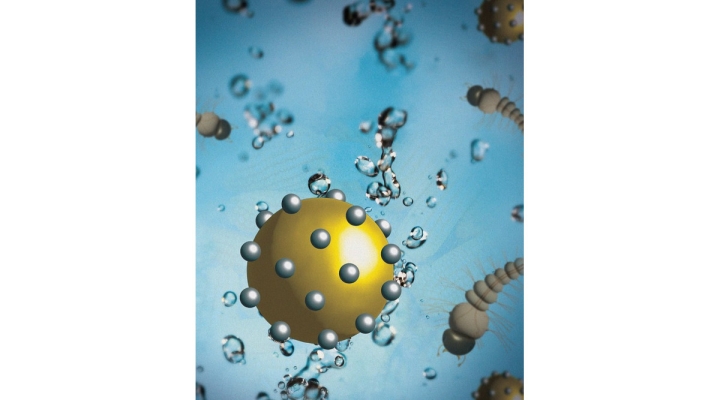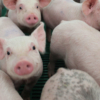MANHATTAN, Kan. – It has been said that dynamite comes in small packages, though not nearly as small as one nanometer.
And, as USDA and Kansas State University entomologists are finding out, not nearly as mighty.
The K-State researchers have published findings of a study in which they’ve tested nanomaterial – theirs is a product consisting of an agricultural waste product attached to a known antimicrobial – that is effective at killing mosquito larvae, while using far fewer insecticides in the process.
They’ve reported the breakthrough in the September issue of the American Chemical Society Omega Journal, which also features an image of their technology as one of the supplemental front covers of the month’s issue.
The work is part of the university’s larger vision to develop nanomaterial that researchers believe will not only reduce pesticide use in the environment, but also be a viable solution for many pests that affect agricultural production, such as Hessian fly, corn rootworm, grasshoppers, termites and more.
K-State’s program is funded for four years by the U.S. Department of Agriculture.
“If nanotechnology can be employed to control pests, it will greatly reduce the use of pesticides in the environment,” said Jeff Whitworth, a field crop entomologist with K-State Research and Extension. “And if researchers can find the right carriers for these nano insecticides – products that may be considered organic waste – that may also reduce the amount of organic waste.”
In the current project, K-State researchers coupled silver – a known antimicrobial – with a corn protein known as zein (pronounced zee-inn) that is typically a waste product. As mosquito larvae filter food from water, they ingest the nanomaterial containing silver.
“We found that in mosquito larvae, silver apparently gets into their mid-gut and kills the microbes that are necessary for mosquito larval well-being,” said K-State nano-entomologist Amie Norton.
The concentration of pesticide in the nanomaterial developed by the USDA/K-State team is, by far, less than what would traditionally be used to combat mosquito populations. According to Norton, K-State’s product included just 1 part per million of pesticide – a proportion similar to 1 drop of water in a 10 gallon fish tank.
She said normal concentrations of pesticide range from 10 to 32 parts per million.
“The advantage of nanotechnology is that you have a larger surface area to work with, and nanomaterials have more bioavailability of active ingredients due to their size,” Norton said. “The increased loading of pesticides onto the surface of nanomaterials and their ability to increase the bioavailability of ingredients to targeted pests results in the use of less active ingredients (pesticides), which leads to lower costs for those using these products.”
Silver is not a typical pesticide used in mosquito control, Whitworth said. Future applications are expected to include a more common pesticide – spinosad – and a growth regulator, methoprene, “so that what doesn’t kill them will keep them from growing into adults,” Norton said.
Nanoparticles are considered part of a bright new future for science and technology. By definition, a nanometer is one-billionth of a meter, so small that it cannot be detected by electronic microscopes.
For perspective, however, consider that one sheet of standard copy paper is 100,000 nanometers thick; a period at the end of this sentence is approximately 1 million nanometers. Or, one nanometer compares to a standard tennis ball in equal proportion to how that same tennis ball compares to planet Earth.
“We are just one year into this area of research,” Whitworth said. “We are looking for ways to recycle agriculture waste and convert it to something useful. It’s a step-by-step process; it takes a while and we are learning as we go.”
— Pat Melgares, K-State Research and Extension news service











